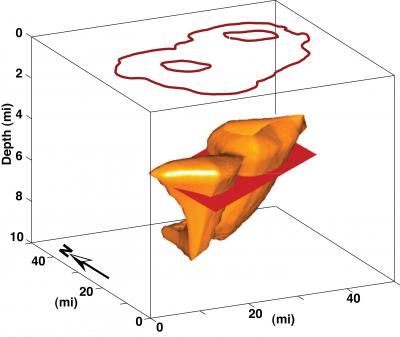![]()
I’ve been taking a look at an “international civil society organization” called the ETC Group. The “ETC” group is also known as the “Action Group on Erosion, Technology and Concentration”. To be honest, I can’t figure them out. Here is a summary:
“ETC Group is an international civil society organization based in Canada. We are dedicated to the conservation and sustainable advancement of cultural and ecological diversity and human rights. ETC Group supports socially responsible development of technologies useful to the poor and marginalized and we address international governance issues affecting the international community. We also monitor the ownership and control of technologies and the consolidation of corporate power.”
So they look like a somewhat standard leftist environmentalist technology oversight group. Alright.
Here is their stance on nanotechnology:
“Nanotechnology refers to the manipulation of matter on the scale of the nanometer (one billionth of a meter). Nanoscale science operates in the realm of single atoms and molecules. At present, commercial nanotechnology involves materials science (i.e. researchers have been able to make materials that are stronger and more durable by taking advantage of property changes that occur when substances are reduced to nanoscale dimensions). In the future, as nanoscale molecular self-assembly becomes a commercial reality, nanotech will move into conventional manufacturing. While nanotechnology offers opportunities for society, it also involves profound social and environmental risks, not only because it is an enabling technology to the biotech industry, but also because it involves atomic manipulation and will make possible the fusing of the biological world and the mechanical. There is a critical need to evaluate the social implications of all nanotechnologies; in the meantime, the ETC group believes that a moratorium should be placed on research involving molecular self-assembly and self-replication.”
(Bold by me.)
This is a touchy issue for researchers. At the Lifeboat Foundation we sometimes talk about the Religion of Science, which states that science must progress as quickly as possible and that any attempt to limit it is foolish and immoral. We’ve had people leave our Scientific Advisory Board when they realized that we did not subscribe to this Religion, but in fact question whether any scientist should be allowed to do just anything.
But we do not go as far as the ETC Group, which is proposing a blanket ban on all molecular self-assembly, a very large and potentially incredibly fruitful field.
What prompted me to write on the ETC Group was a news release they sent me today on synthetic biology:
ETC Group
News Release
17 October 2007
www.etcgroup.org
Syns of Omission:
Civil Society Organizations Respond to Report on Synthetic Biology
Governance from the J. Craig Venter Institute and Alfred P. Sloan
Foundation
A report released today on policy options for governance of synthetic
biology is a disappointing effort that fails to address wider
societal concerns about the rapid deployment of a powerful and
controversial new technology. Synthetic biology aims to commercialize
new biological parts, devices and living organisms that are
constructed from synthetic DNA – including dangerous pathogens.
Synthetic biologists are attempting to harness cells as tiny
factories for industrial production of chemicals, including
pharmaceuticals and fuels. ETC Group describes the synthetic biology
approach as “extreme genetic engineering.”
The report, authored by scientists and employees from the J. Craig
Venter Institute, Massachusetts Institute of Technology (MIT) and the
Center for Strategic & International Studies (Washington, D.C.) was
funded by a half-million dollar grant from the U.S.-based Alfred P.
Sloan Foundation and billed as a “project to examine the societal
implications of synthetic genomics.” The study was more than two
years in the making, but the report makes no policy recommendations
and failed to properly consult civil society. While the authors do
acknowledge possible bio-error (i.e., synbio accidents that cause
unintended harm to human health and the environment), the emphasis is
on how to impede bioterrorists “in a post-September 11 world.”
“This report is a partial consideration of governance by a partisan
group of authors,” explains Jim Thomas of ETC Group. “Its authors are
‘Synthusiasts’ – or, unabashed synthetic biology boosters – who are
primarily concerned about holding down costs and regulatory burdens
that could allegedly stymie the rapid development of the new
industry. By focusing narrowly on safety and security in a U.S.-
centric context, the report conveniently overlooks important
questions related to power, control and the economic impacts of
synthetic biology. The authors have ignored the first and most basic
questions: Is synthetic biology socially acceptable or desirable? Who
should decide? Who will control the technology, and what are its
potential impacts?”
The report’s authors include representatives from institutions that
have a vested interest in commercialization of synthetic biology.
According to the J. Craig Venter Institute, one of the three
institutions that led the study, scientists are just weeks or months
away from announcing the creation of the world’s first-ever living
bacterium with entirely synthetic DNA and a novel genome. Scientists
from the Venter Institute have already applied for patents on the
artificial microbe, and Craig Venter predicts that it could be the
first billion or trillion dollar organism. The report fails to
address issues of ownership, monopoly practices or intellectual
property claims arising from synthetic biology.
“The sixty-page report has oodles of input from a small circle of
scientists and policy ‘experts,’ but the 20-month long study fails to
incorporate views of civil society and social movements,” points out
Hope Shand, ETC Group’s Research Director. “An insular process like
the one that produced the Sloan report instills little confidence in
the results.”
The economic and technical barriers to synthetic genomics are
collapsing. Using a laptop computer, published gene sequence
information and mail-order synthetic DNA, it is becoming routine to
construct genes or entire genomes from scratch – including those of
lethal pathogens. The tools for DNA synthesis technologies are
advancing at break-neck pace – they’re becoming cheaper, faster and
widely accessible. The authors acknowledge this reality, and evaluate
several options for addressing it.
One proposal aimed at “legitimate users” of the technology – those
working in industry labs, for example – is to broaden the
responsibilities of Institutional Biosafety Committees, which were
established (in the US) to assess the biosafety and environmental
risks of proposed recombinant DNA experiments.
Edward Hammond, Director of the Sunshine Project, a biotech and
bioweapons watchdog, argues, “Institutional Biosafety Committees are
a documented disaster. IBCs aren’t up to their existing task of
overseeing genetic engineering research, much less ready to absorb
new synthetic biology and security mandates. The authors of this
report are aware of the abject failure of voluntary compliance by
IBCs, including by the Venter Institute’s own IBC. So it is very
difficult to interpret their suggestion that IBCs oversee synthetic
biology as anything but a cynical attempt to avoid effective
governance.”
Options for governing synthetic biology must not be set by the
synthetic biologists themselves – broad societal debate on synbio’s
wider implications must come first. Synthetic microbes should be
treated as dangerous until proven harmless and strong democratic
oversight should be mandatory – not optional. Earlier this year the
ETC Group recommended a ban on environmental release of de novo
synthetic organisms until wide societal debate and strong governance
are in place.
ETC and other civil society organizations have called repeatedly for
an inclusive, wide ranging public dialogue process on societal
implications and oversight options for Synthetic Biology.
The full text of “Synthetic Genomics: Options for Governance” is
available here:
http://www.jcvi.org/
ETC Group’s January 2007 report on synthetic biology, Extreme Genetic
Engineering, is available here:
http://www.etcgroup.org/en/materials/publications.html?pub_id=602
Backgrounder: Open Letter on Synthetic Biology from Civil Society,
May 2006:
http://www.etcgroup.org/en/materials/publications.html?pub_id=11
~~~
Does synthetic biology need more oversight? I believe it does. But I am hesitant to support the ETC Group in full, because some statements on their website have a Luddite flavor. For instance, I think it is infeasible to call for a moratorium on molecular self-assembly.
Another cause the ETC Group seems to be involved in is that of “Terminator” seeds — seeds that grow into plants which are sterile, forcing farmers to return to the seed market. They call this “an immoral application of biotechnology” and I’m inclined to agree.
The ETC Group also seems preoccupied with the phrase “Playing God” to scare up support a little too often for my liking.
I think that new technologies such as MNT and synthetic biology need to be regulated, but I don’t like the extremes I’m seeing: either pure boosterism, or borderline Luddism. The only organizations we can trust are those not attached to any particular extreme. The Lifeboat Foundation seems to be one.
What do you think?

